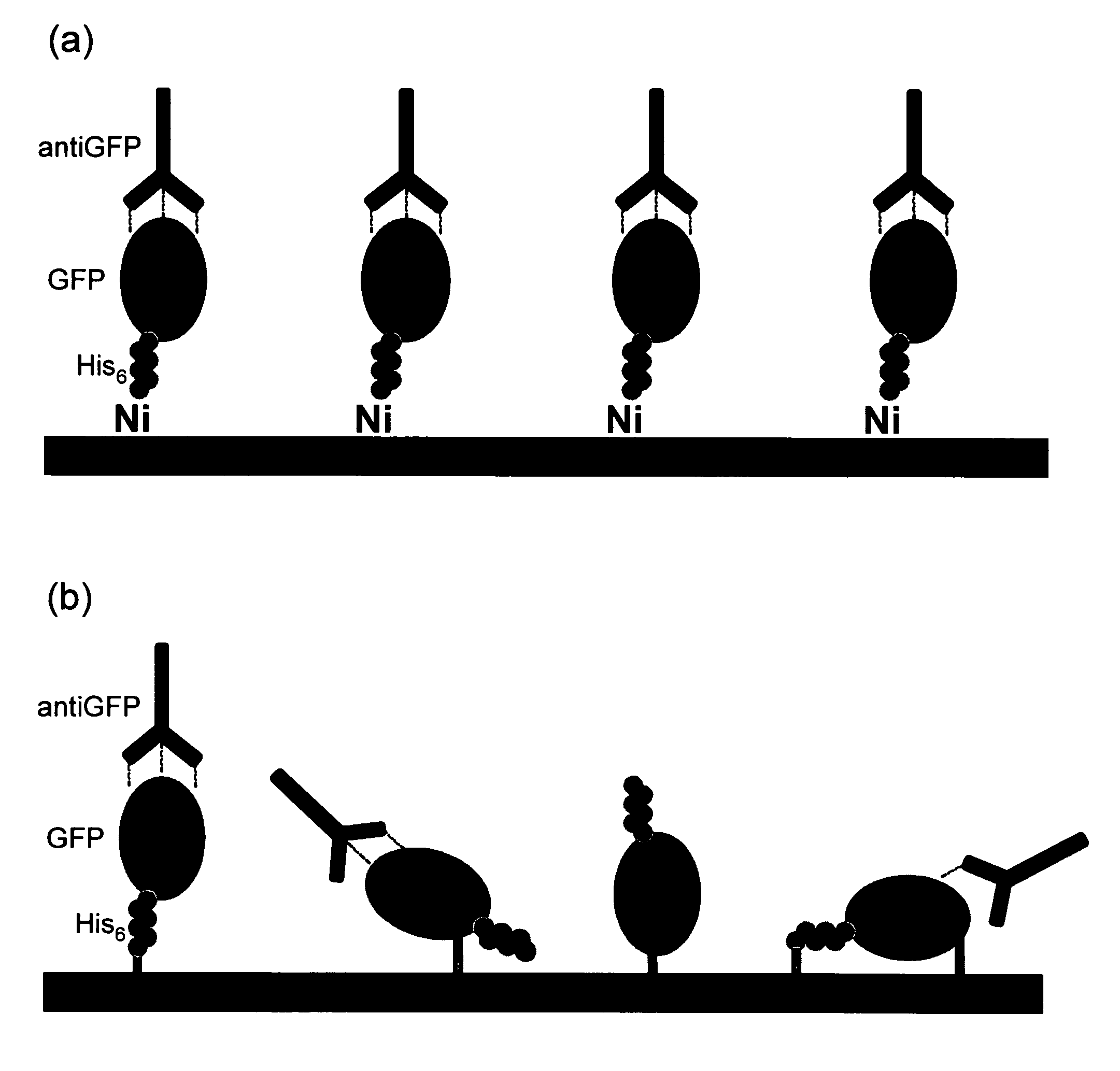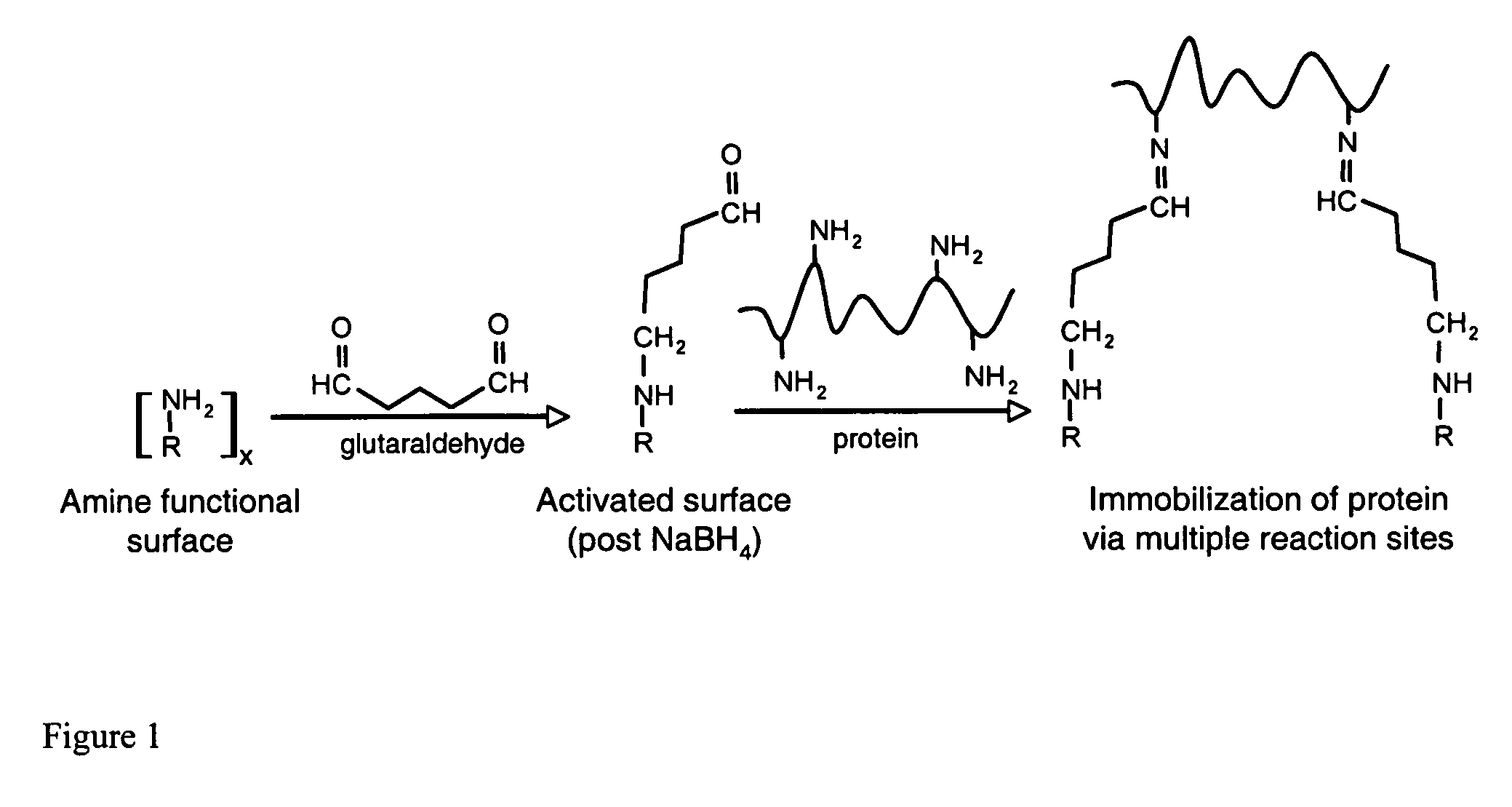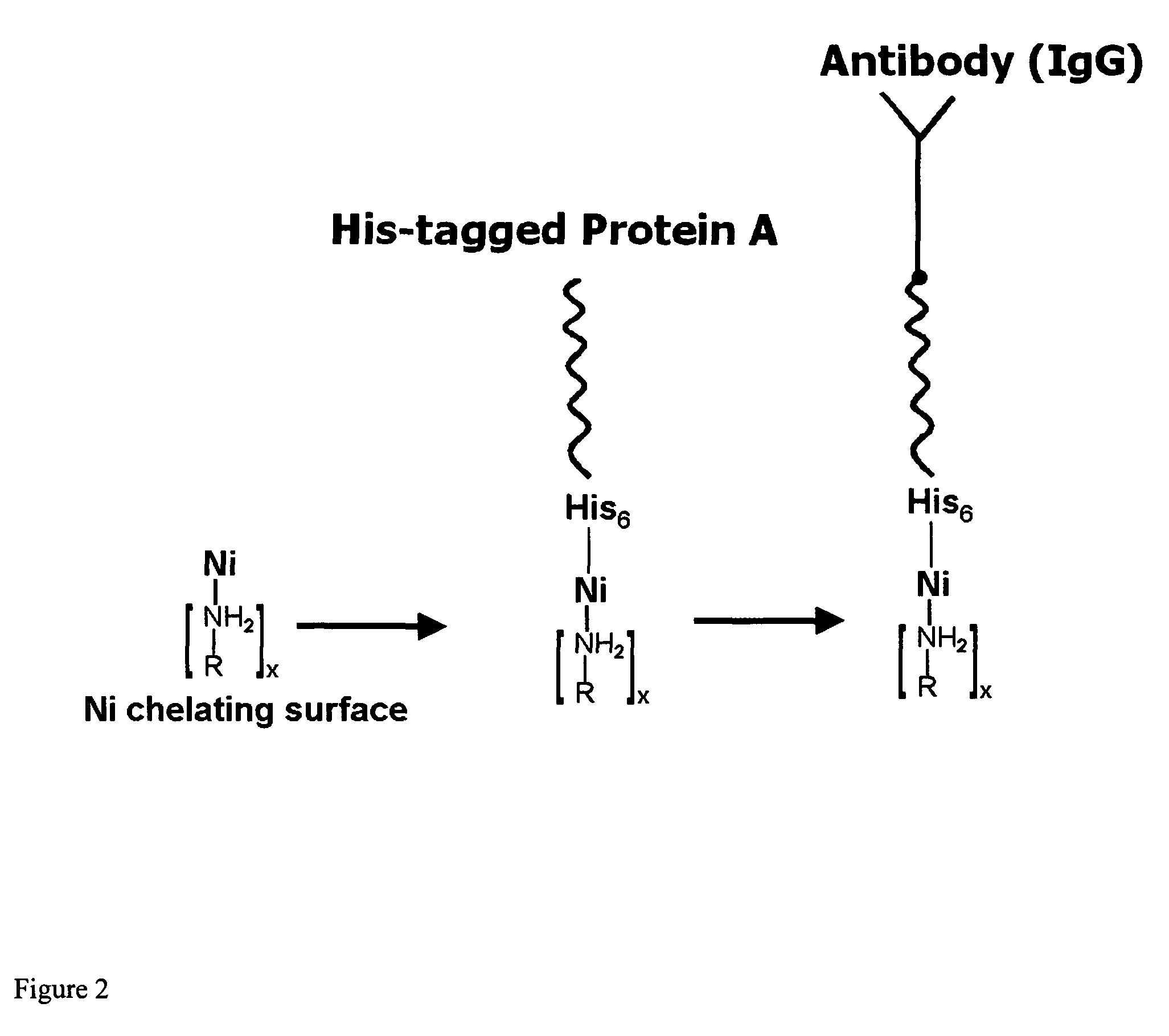Affinity membrane for capture of a target biomolecule and formation thereof by site-directed immobilization of a capture biomolecule
a biomolecule and affinity membrane technology, applied in the field of affinity membranes for the capture of target biomolecules, can solve the problems of reducing the sensitivity of multimembrane approaches, affecting the detection efficiency of target biomolecules, and limited number of proteins that can be analyzed, so as to improve the number of target binding sites and prevent or prevent the effect of aging and improving the orientation of said capture biomolecules
- Summary
- Abstract
- Description
- Claims
- Application Information
AI Technical Summary
Benefits of technology
Problems solved by technology
Method used
Image
Examples
Embodiment Construction
[0088]The site-directed orientation of capture biomolecules, particularly antibodies, on a membrane surface, requires a functional surface to which said biomolecules (or alignment biomolecules) can be attached using specific chemical interactions, such as chelation, coordination, or covalent reaction (FIG. 24).
[0089]Referring to FIGS. 10 and 11, the number of membranes 14 in stack 12 may be as few as two or as many as 100. The number of membranes in a stack depends largely on the number of targets sought to be identified in the sample. Each membrane is preferably coated with a different capture biomolecule specific to a particular target of interest.
[0090]The membranes 14 are preferably constructed of a thin, low-porosity porous substrates with straight-through pores that are coated with capture biomolecules. The substrate is preferably constructed of polycarbonate or a similar polymeric material that maintains sufficient structural integrity despite being made porous and very thin....
PUM
| Property | Measurement | Unit |
|---|---|---|
| pH | aaaaa | aaaaa |
| concentrations | aaaaa | aaaaa |
| concentrations | aaaaa | aaaaa |
Abstract
Description
Claims
Application Information
 Login to View More
Login to View More - R&D
- Intellectual Property
- Life Sciences
- Materials
- Tech Scout
- Unparalleled Data Quality
- Higher Quality Content
- 60% Fewer Hallucinations
Browse by: Latest US Patents, China's latest patents, Technical Efficacy Thesaurus, Application Domain, Technology Topic, Popular Technical Reports.
© 2025 PatSnap. All rights reserved.Legal|Privacy policy|Modern Slavery Act Transparency Statement|Sitemap|About US| Contact US: help@patsnap.com



